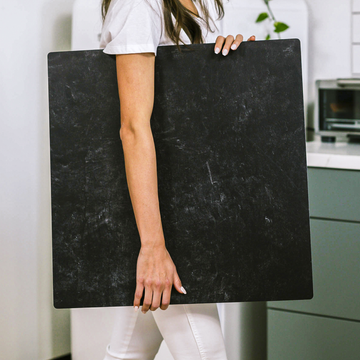Most product photographers and small business owners see background boards as simple props-neutral surfaces that keep the spotlight where it belongs: on the product. But what if the real power of your boards goes far beyond their surface? The truth is, the colors, textures, and subtle combinations you choose can deeply influence how customers feel about your products and your brand.
Let’s look beneath the surface and discover how background boards can transform your images, convey your brand message, and even support your sales-all before your viewers read a single word.
The Hidden Science of Color and Texture
You already know that certain colors evoke certain feelings: sky blues are calming, crisp whites feel fresh, earthy greens suggest nature. But have you ever considered how your background color interacts with your product’s color? This “adjacency effect”-the science of how colors influence each other-can make your product leap off the page or, if you’re not careful, blend in and disappear.
Here’s where it gets interesting:
- A white product on a soft blue-gray surface looks brighter, cleaner, and more luxurious thanks to a color phenomenon called simultaneous contrast.
- Warm-tone backgrounds (like walnut or clay) enhance cozy, handmade appeal for items like ceramics or textiles.
But color is only half the story. Texture-whether it’s the real grain of faux wood or the printed grit of concrete-not only adds realism to your shots, but also stirs your viewer’s sense of touch. A rustic board can amplify the artisanal feel of a product, while a slick, matte surface can spotlight precision and modern style.
Why Modular Boards Change the Game
The rise of modular boards-using two or more boards at different angles-has unlocked new creative territory in product photography. This isn’t just about creating variety; it’s about controlling the entire visual environment around your product.
- Color blocking: Place contrasting colors behind and beneath your subject to grab attention and guide the viewer’s eye to the most important details.
- Gradient shadows: Adjust the lighting so the seam where boards meet creates soft, inviting gradients, adding depth and dimension to your shot.
For example, think about showing off a handcrafted mug. Set it on a marbled gray board with a vertical walnut background. The result? Instantly, your image says warmth, comfort, and authentic craftsmanship-without a word of copy or explanation.
Your Boards, Your Silent Light Modifiers
There’s a technical advantage here most creators miss: background boards don’t just reflect your creative choices, they literally shape your light.
- Matte surfaces absorb and diffuse, keeping glare off shiny items and helping show off subtle details.
- Using a second vertical board acts as a light barrier, helping you dial in soft shadows, keep colors clean, and give objects sharply defined edges right in camera.
This level of control helps you create images with richer, crisper shadows and more accurate colors, cutting down on post-processing and giving you a more professional, consistent look.
How Background Boards Tell Emotional Stories
No one ever sees a background board and thinks, "Wow, this backdrop really speaks to me!" But on a subconscious level, the choice of surface sets the entire mood of your photo shoot.
- Distressed textures-like chipped stone or aged wood-cue nostalgia, craft, and storytelling for artisan or handmade goods.
- Glossy, solid backgrounds send messages of luxury and sophistication, perfect for tech products or fine jewelry brands.
By matching the character of your boards to the feeling you want to evoke, you create an unspoken narrative that runs through every image you share.
Background Boards as Brand-Building Assets
If you want your product photography to stand out, consistency is king. Treat your favorite background board as part of your brand identity-just as vital as your logo or business card. Over time, a signature texture or color in your backgrounds makes your photos instantly recognizable wherever they appear.
Expert tip:
- Choose a surface that complements your brand colors and use it in every collection. This is your visual fingerprint and it builds instant trust and recognition.
Takeaway: Engineer Every Detail
Background boards are not just set dressing. They’re active participants in your product’s story-and in your business’s success. By thinking strategically about color, texture, modular setups, and consistency, you can make your photos more engaging, memorable, and effective.
- Ask what emotion you want to trigger in your viewer.
- Be intentional about how color and texture work together in each shot.
- Use modular setups to add story, dimension, and visual impact.
- Choose a board style that becomes synonymous with your brand.
If you’re ready to get intentional with every shot, start experimenting with your own combinations and see how the smallest details-like your humble background board-can transform your photography and your brand from the ground up.
Questions? Want to brainstorm your unique “board language” or get tips for advanced lighting setups? Reach out in the comments below and let’s unlock the full power of your creative space.



